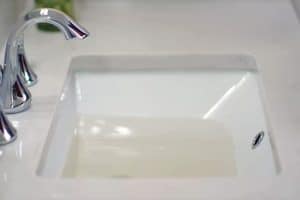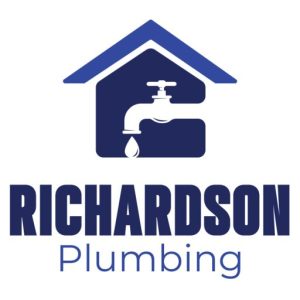
Understanding the Problem: Common Causes of Slow Draining Sinks
Identifying the root cause of a slow-draining sink is the first step toward a solution. Several factors can contribute to this issue, including:
Hair and Soap Scum Buildup
In bathroom sinks, hair is often the primary culprit. When combined with soap scum, it can create a thick mass that obstructs the flow of water. Regular cleaning can help mitigate this problem.
Food Particles and Grease
In kitchen sinks, leftover food, grease, and oil can accumulate over time, leading to clogs. These substances can harden and stick to the walls of the pipes, making it difficult for water to pass through.
Foreign Objects
Sometimes, small items like jewelry, toys, or other debris can accidentally fall into the sink, causing an obstruction. A quick visual inspection can often reveal these hidden culprits.
Mineral Deposits
Hard water can lead to mineral buildup inside pipes, narrowing the passageway and slowing drainage. This is particularly common in areas with high mineral content in the water supply.
Structural Issues
In some cases, the problem may be due to broken or corroded pipes. Misalignment or damage can restrict water flow, necessitating professional intervention.
Step 1: Initial Inspection
Before attempting any fixes, perform a thorough inspection to identify the cause of the slow drainage. Here’s how:
Visual Check
Remove the drain cover and use a flashlight to look inside. Check for hair, food particles, or any other visible debris. If you spot something, carefully remove it.
Listen for Sounds
Gurgling noises from the sink can indicate trapped air or a blockage further down the line. Pay attention to these sounds, as they can provide clues about the issue.
Assess Water Flow
Run the tap and observe how quickly the water drains. This can help you gauge the severity of the clog and inform your next steps.
Step 2: Some Possible DIY Solutions
Once you’ve identified the potential cause, it’s time to roll up your sleeves and try some straightforward solutions.
Remove Visible Blockages
If you can see debris in the drain, use gloves to pull it out. This simple step can often resolve the issue immediately.
Boiling Water Treatment
For minor clogs, pouring boiling water down the drain can help dissolve grease and soap scum. Be cautious if your pipes are plastic, as extreme heat can cause damage.
Use a Plunger
A plunger can be effective for dislodging clogs that are not immediately visible. Make sure there’s enough water in the sink to cover the plunger, then create a tight seal and plunge vigorously for 15-20 seconds.
Step 3: Advanced Techniques
If the simple methods don’t yield results, you may need to employ more advanced techniques.
Drain Snake or Auger
A drain snake is a flexible tool designed to reach deeper clogs. Insert the snake into the drain and turn it clockwise as you push it down. Once you hit resistance, continue turning to break up the blockage.
Zip-It Tool
This handy tool resembles a flexible plastic stick with barbs. Insert it into the drain to snag hair and soap scum. It’s particularly effective for bathroom sinks.
Homemade Drain Cleaner
A mixture of baking soda and vinegar can work wonders. Pour half a cup of baking soda followed by half a cup of vinegar down the drain. Allow it to fizz for about 15 minutes, then flush with hot water.
Step 4: Cleaning the P-Trap
If you’re still facing drainage issues, the P-trap might be the culprit. This U-shaped pipe under the sink can collect debris over time.
How to Clean the P-Trap
-
- Turn Off Water Supply: Before starting, turn off the water supply to the sink.
- Place a Bucket: Position a bucket under the P-trap to catch any water or debris.
- Remove the P-Trap: Unscrew the slip nuts and carefully remove the P-trap.
- Clean It: Inspect the inside for buildup and clean it thoroughly with a brush or cloth.
- Reattach: Once cleaned, reattach the P-trap and check for leaks by running water.
Step 5: Preventive Maintenance
After resolving the issue, it’s essential to implement preventive measures to avoid future slow drains.
Regular Cleaning
Make it a habit to clean the sink and drain regularly. Remove hair and debris promptly to prevent buildup.
Use Drain Guards
Install mesh drain guards to catch food particles and hair before they enter the pipes. This simple addition can save you a lot of hassle in the long run.
Flush with Hot Water
Periodically pour boiling water down the drain to dissolve grease and soap scum. Doing this once a month can help maintain clear pipes.
Proper Disposal
Be mindful of what goes down the sink. Avoid pouring grease, oil, or non-biodegradable items down the drain. Use the trash for items like food scraps and hair.
Step 6: When to Call a Professional
While many slow-draining sink issues can be resolved with DIY methods, some situations require professional assistance.
Signs You Need Help
-
- Persistent Clogs: If you’ve tried multiple methods without success, it may be time to consult a plumber.
- Gurgling Noises: If you hear gurgling sounds from multiple drains, it could indicate a more serious issue in your plumbing system.
- Slow Drains Throughout the House: If all your drains are slow, there may be a blockage in the main sewer line.
- Visible Damage: If you notice cracks or corrosion in your pipes, professional help is necessary to avoid further damage.
Step 7: Understanding Plumbing Systems
To better manage your plumbing, it’s helpful to understand how your system works.
Drainage System Basics
Your plumbing system consists of pipes that carry water to and from your home. Understanding this layout can help you identify potential problem areas.
The Role of Vents
Venting allows air to enter the plumbing system, which helps maintain proper pressure and drainage. Blocked vents can lead to slow drains and should be checked if you experience persistent issues.
Main Sewer Line
The main sewer line carries waste away from your home. If you suspect problems here, a professional plumber can perform a camera inspection to diagnose the issue accurately.
Step 8: Additional Tools and Techniques
Having the right tools can make fixing a slow-draining sink easier.
Essential Tools
-
- Plunger: A basic yet effective tool for dislodging clogs.
- Drain Snake: Useful for reaching deeper blockages.
- Zip-It Tool: Great for snagging hair and debris.
- Bucket: Essential for catching water when cleaning the P-trap.
Alternative Solutions
Consider using enzymatic drain cleaners, which are less harsh than traditional chemical cleaners. These products can help break down organic matter without damaging your pipes.
Step 9: DIY vs. Professional Services
Knowing when to tackle plumbing issues yourself and when to call in the experts is crucial.
Cost Considerations
DIY solutions can save you money, but if the problem persists, hiring a professional may be more cost-effective in the long run.
Expertise and Tools
Professionals have specialized tools and experience that allow them to diagnose and fix issues quickly. If you’re unsure about a problem, it’s better to consult an expert.
Step 10: Long-Term Solutions
To ensure your sink remains free of clogs, consider long-term strategies.
Regular Inspections
Schedule periodic inspections of your plumbing system. This proactive approach can help identify issues before they become major problems.
Upgrade Your Plumbing
If your home has older pipes, consider upgrading to newer materials that are less prone to clogs. Discuss options with a plumbing professional to find the best solution for your home.
Step 11: Eco-Friendly Practices
Sustainable plumbing practices can benefit both your home and the environment.
Use Natural Cleaners
Opt for eco-friendly cleaning solutions like vinegar and baking soda instead of harsh chemicals. These natural alternatives are safer for your plumbing and the environment.
Reduce Water Usage
Implement water-saving fixtures to decrease the amount of water flowing through your pipes. This can help reduce the likelihood of clogs and save on your water bill.
We Install and Repair Drains
When it comes to sewer and drain installation and repair services, it’s essential to rely on a trusted and experienced team to handle your needs. Richardson Plumbing offers a comprehensive range of services, including main sewer line repair, sewer line replacement, no-dig pipe restoration, and sewer line cleaning.
> Learn More
A slow-draining sink can be a hassle, but with the right knowledge and tools, you can tackle many of these issues yourself. From identifying the cause to implementing preventive measures, being proactive can save you time and money. If all else fails, don’t hesitate to seek professional assistance to keep your plumbing in top shape. By understanding your plumbing system and taking care of it, you can enjoy a smoothly functioning sink for years to come.
Contact us (859-371-2239) for a free consultation!
—
 About Richardson Plumbing
About Richardson Plumbing
Richardson Plumbing offers a wide range of residential and commercial plumbing services using seasoned professionals and the highest quality parts and equipment available. We continually strive to exceed expectations by ensuring that each client receives prompt, outstanding service from our entire organization. Richardson Plumbing provides free consultations that explain all of your available options, so you can choose the scope of work that’s right for your home or business. When you have problems that just can’t wait until tomorrow, we can provide 24 hour emergency services.
> Learn More

 About Richardson Plumbing
About Richardson Plumbing